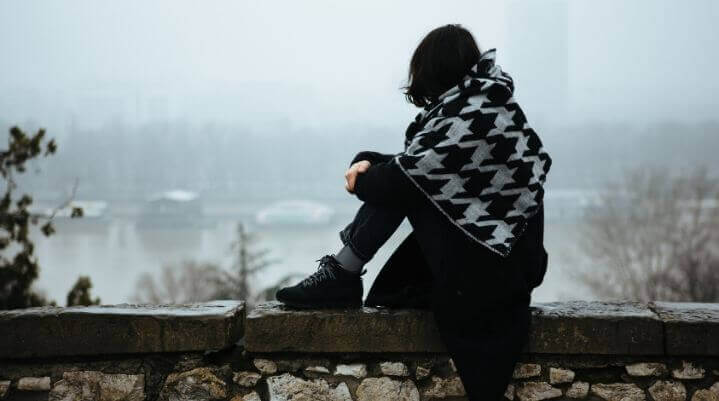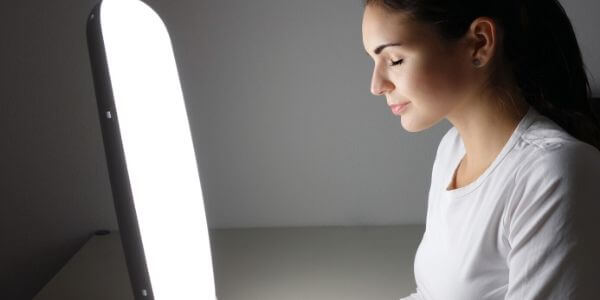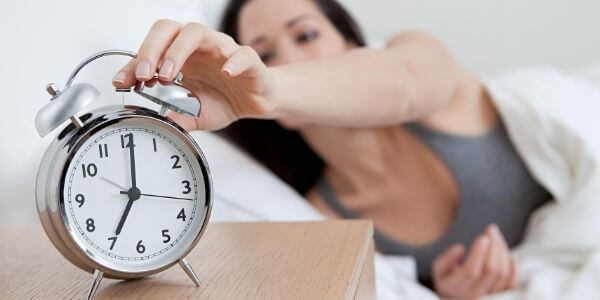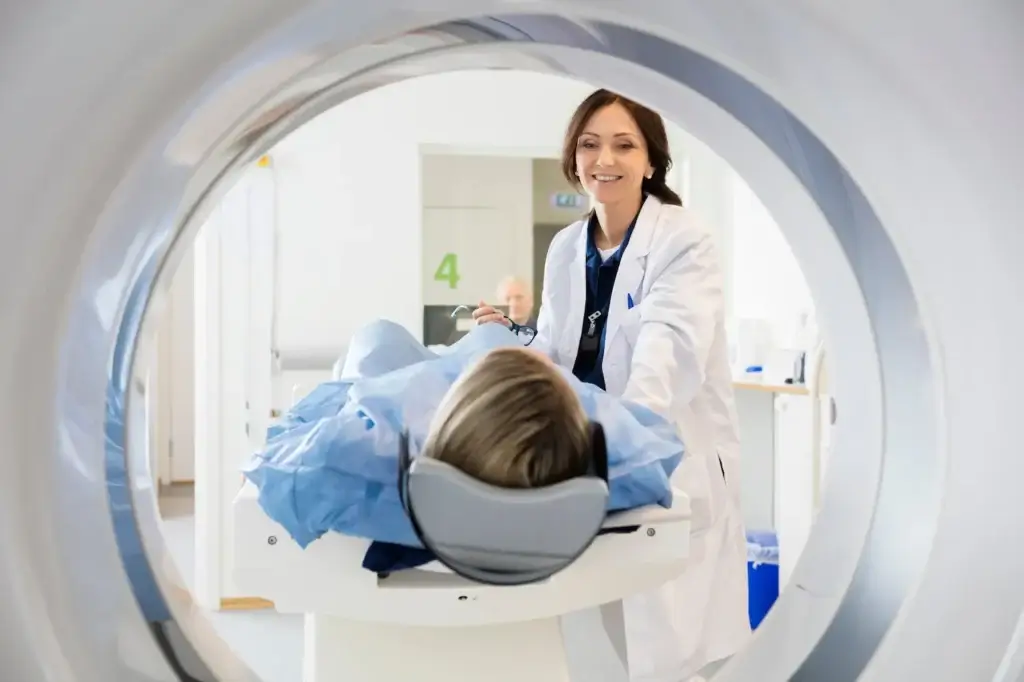
In this article, we find out more about what SAD is and how it can affect you during the winter season. We also speak to GP Dr Ian Cole, who has expertise in mental health, for his recommendations on the best ways you can support your mental wellbeing this winter. What is Seasonal Affective Disorder?…
In this article, we find out more about what SAD is and how it can affect you during the winter season. We also speak to GP Dr Ian Cole, who has expertise in mental health, for his recommendations on the best ways you can support your mental wellbeing this winter.
What is Seasonal Affective Disorder?
SAD is a form of depression or low mood that occurs in seasonal cycles. It tends to begin at the onset of autumn and stays throughout winter, getting better as the spring weather begins to appear and remaining so throughout the summer. Only for it to reappear again in autumn.
For this reason, SAD is also often referred to as winter depression.
The symptoms of SAD include:
- A low mood that won’t shift
- Feeling irritable
- Feeling stressed, anxious or tearful
- Losing pleasure in things that have previously felt pleasurable
- Feeling less sociable
- Difficulty concentrating
- Lethargy
- Requiring more sleep than normal
- Increased appetite, particularly for carbohydrate-heavy foods
- Weight gain
What causes SAD?
It’s thought that Seasonal Affective Disorder is linked to the reduction in sunlight that we experience during the autumn and winter. It’s not fully understood why some people develop the symptoms of SAD, but researchers believe that an area at the base of the brain called the hypothalamus needs sunlight in order to function properly.
The hypothalamus is a relatively small area of the brain, but it’s responsible for a great number of functions. These functions include appetite control, regulating our emotional responses and regulating body temperature. It’s also crucial for helping the body regulate its internal body clock (called our circadian rhythm), and for managing the release of the hormones melatonin and serotonin.
Our body clock is biologically programmed to wake to sunlight and go to sleep when it gets dark. Darker mornings and shorter days can disrupt this rhythm, leading to symptoms of SAD.
The hormone melatonin is released in the evening to make us feel sleepy and ready for bed. It’s thought that people with SAD release more melatonin earlier in the day making sufferers feel sluggish and low.
Serotonin helps to regulate our mood and is often referred to as a happy hormone. A reduction in sunlight can cause levels of serotonin to drop, leading to a low mood and other SAD symptoms.
There are treatments available that work in different ways for different people. One that is gaining popularity is light therapy.
What is light therapy?
Light therapy is a form of treatment used to help manage the symptoms of Seasonal Affective Disorder. It involves the use of a special light box, often called a SAD light, that emits a very strong, bright light to simulate exposure to sunlight. UV light has been filtered out, so there are no risks of skin or eye damage.
The light emitted helps to stimulate the hypothalamus to reduce melatonin production and increase that of serotonin.
SAD lights come in various designs including desk lamps and larger lights you can affix to the wall. The treatment involves sitting next to this light for around half an hour each morning to help trick the hypothalamus into thinking there’s more daylight than there actually is.
Always make sure you buy a SAD light that’s been designed and made for treating SAD and is medically approved.

Do SAD lights work?
Many people find that using a SAD light is effective at noticeably lifting their mood within a week. Using light therapy won’t prevent SAD from returning the following autumn, but regular use, particularly in the morning, can help to treat the symptoms of SAD as they appear.
Side effects are rare but can include blurred vision, headaches and eye strain. Avoid using a SAD light in the evening as this can disrupt your sleeping patterns by tricking your brain into thinking it’s daytime.
How to deal with Seasonal Affective Disorder
Aside from trying light therapy, here’s our top ten tips for combating SAD.
1. Dawn simulation
Dawn simulation lights are similar to SAD lights but are designed to gradually wake you up each morning. They’re available as standalone bedside lamps, or as bulbs you can fit to your ceiling light with an accompanying timer you attach to your light switch.
You then set the timer to begin waking you up at your chosen time. The light will gradually get brighter over 30 to 90 minutes, just as sunlight does in the morning. Meaning that when you wake up, your room will feel like it’s illuminated with sunlight.
These lights are particularly useful if you get up very early when it’s still dark all year round or if you don’t have time to sit in front of a SAD light for half an hour each morning.
2. Stick to the same sleep-wake cycle
You can help your natural circadian rhythms by going to bed and waking up at a similar time every day, even on weekends.
As tempting as it might be to have a late night and sleep in at the weekend, doing so will disrupt your weekly sleep-wake cycle and make Monday morning even more of a struggle!

3. Try ecotherapy
Ecotherapy is a term used to describe the practice of being outside in nature for its therapeutic benefits. It can also be referred to as green exercise or green therapy.
It involves carrying out activities such as exercise, gardening, volunteering or exploring outside, noticing and appreciating the beauty of the nature surrounding you.
It’s often a formal kind of treatment, performed under the care of a therapist and can involve group work such as volunteering at a local green space, conservation project or farm. Or it can involve simply experiencing nature, rather than working in it.
Ecotherapy can be arranged via a referral from your GP or through the mental health charity Mind.
You can also choose to spend as much time outside as possible. Being present and mindful as you go about your day (rather than hurrying through the rush hour or doing the weekly shop without noticing your surroundings) can provide health benefits such as stress relief which will help you manage winter depression.
4. Keep your vitamin D levels topped up
A recent study found a link between Seasonal Affective Disorder and low vitamin D levels. Vitamin D is synthesised by the body when sunlight hits exposed skin, which is why so many people are thought to have a deficiency in this vitamin during the colder months when sunlight is low and our skin is covered.
Vitamin D is required for strong bones and teeth but it’s now thought that a deficiency is linked to mental health problems such as depression, too.
The NHS recommends taking a 10 microgram vitamin D supplement every day between October and March to ensure you’re getting enough.
You can help top up your levels by being outside as much as possible. At lunch time, make sure you get outside for a walk. Even if it’s for ten minutes in the cloud or rain, you’ll still be getting some level of daylight which will help.
5. Fill your home with plants
Bring a little bit of the outside, inside by having lots of pot plants around your home. Not only do they look good, looking after plants (and gardening outside) can help to lift a low mood.
Plants help to purify the air, reduce noise pollution and most importantly, reduce stress and improve both physical and mental wellbeing. This is all linked with the natural desire of humans to connect with the natural world, an innate desire called biophilia.
Have a plant in your bedroom and on your desk to help you connect with the outside and feel closer to nature.

6. Flood your home with light
Allowing as much light into your home as possible will help tell your brain that it’s daytime. Keep curtains and blinds open during daylight hours and make sure windows are free from objects that might block natural light.
As much as you can, try to get as much light as possible at work, too. There might be a battle for who sits next to the window, but either way try to spend break times outside as well.
7. Get crafty
Like ecotherapy, arts and crafts therapies are managed by a trained professional and help calm the mind which is especially helpful in cases of winter depression.
Learning a new craft, or picking up an old one, helps to form new connections in the brain, a phenomenon known as neuroplasticity. It helps to improve cognitive function (learning, memory, reasoning, decision making etc) which itself can lead to an improved mood.
Arts and crafts therapies can include dance, movement and drama and can be arranged via your GP or Mind. But you can also join local groups independently from formal therapy, that teach anything from sewing to playing a musical instrument, and these can be great for mental wellbeing.
8. Get social
Joining a local hobbyist group, social club, sports team or volunteer organisation is also great for meeting local, like-minded people.
Having a good social network is essential for many aspects of mental health including combating loneliness and instilling a sense of belonging, as well as helping with the symptoms of SAD.
SAD symptoms can also be improved by staying in contact with close friends and family, so try to make the effort to have events and meet-ups booked in. They don’t have to be elaborate trips out. Meeting for a walk or a coffee with someone you love spending time with is very beneficial.

9. Exercise, outside!
Exercise, even if you don’t feel like doing it, releases happy, feel-good endorphins which helps to improve mood. Exercising outside has the added benefit of connecting us with nature.
Being physically active also helps to reduce levels of stress and anxiety, which could also help you manage your SAD symptoms.
10. Create a self care kit
If you suffer with SAD and you feel a particularly low patch coming on, do things to make you feel happy. This could be watching your favourite film, spending time with people who spark joy, enjoying a bubble bath or pampering session or visiting your favourite museum.
More information
- If you think you have SAD and none of the recommended self help treatments work, speak to your GP. You may benefit from talking therapy such as Cognitive Behavioural Therapy (CBT) or from considering antidepressant medication.
- If you don’t have access to a GP, you can make an appointment to see one of our same day private GPs.
Article Sections
Latest Hospital News
Should you wish to speak to our press team, please visit Press Enquiries





